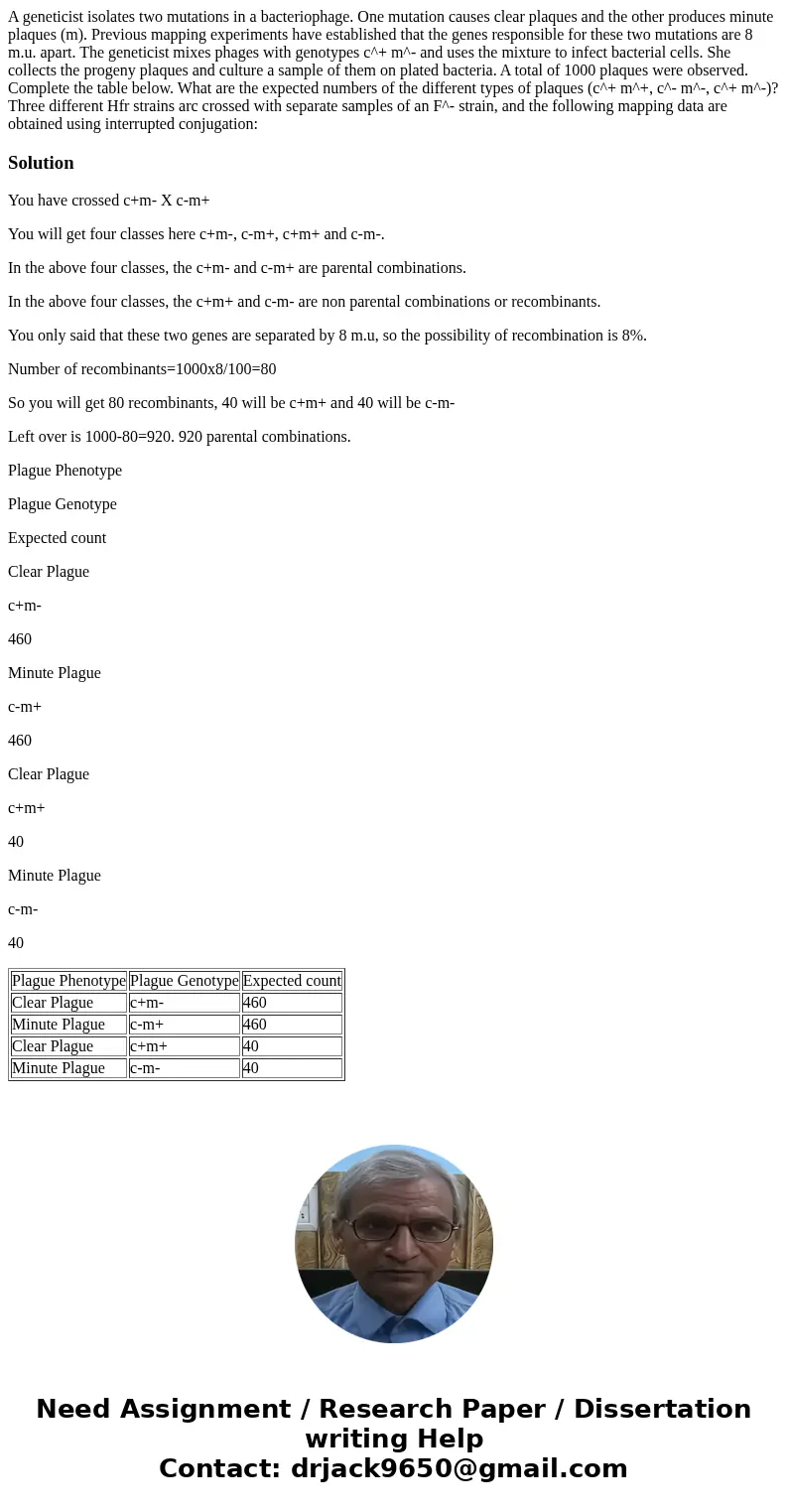A geneticist isolates two mutations in a bacteriophage One m
A geneticist isolates two mutations in a bacteriophage. One mutation causes clear plaques and the other produces minute plaques (m). Previous mapping experiments have established that the genes responsible for these two mutations are 8 m.u. apart. The geneticist mixes phages with genotypes c^+ m^- and uses the mixture to infect bacterial cells. She collects the progeny plaques and culture a sample of them on plated bacteria. A total of 1000 plaques were observed. Complete the table below. What are the expected numbers of the different types of plaques (c^+ m^+, c^- m^-, c^+ m^-)? Three different Hfr strains arc crossed with separate samples of an F^- strain, and the following mapping data are obtained using interrupted conjugation:

Solution
You have crossed c+m- X c-m+
You will get four classes here c+m-, c-m+, c+m+ and c-m-.
In the above four classes, the c+m- and c-m+ are parental combinations.
In the above four classes, the c+m+ and c-m- are non parental combinations or recombinants.
You only said that these two genes are separated by 8 m.u, so the possibility of recombination is 8%.
Number of recombinants=1000x8/100=80
So you will get 80 recombinants, 40 will be c+m+ and 40 will be c-m-
Left over is 1000-80=920. 920 parental combinations.
Plague Phenotype
Plague Genotype
Expected count
Clear Plague
c+m-
460
Minute Plague
c-m+
460
Clear Plague
c+m+
40
Minute Plague
c-m-
40
| Plague Phenotype | Plague Genotype | Expected count |
| Clear Plague | c+m- | 460 |
| Minute Plague | c-m+ | 460 |
| Clear Plague | c+m+ | 40 |
| Minute Plague | c-m- | 40 |

 Homework Sourse
Homework Sourse